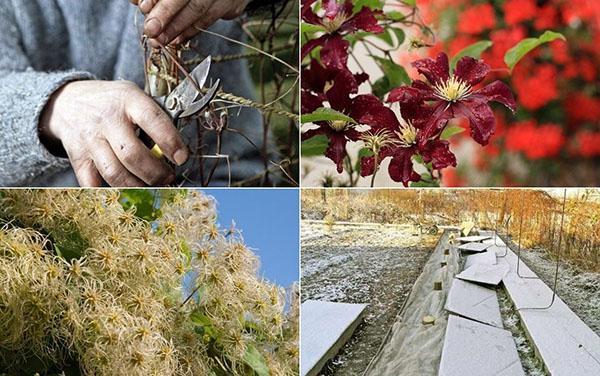We professionally prepare clematis for the winter - closing the season
 Everyone can create a beautiful and spectacular garden that will delight with its appearance next year. To do this, it is necessary to properly prepare clematis for the winter. Before discussing shelter options, there are several ways to prune this amazing crop worth considering.
Everyone can create a beautiful and spectacular garden that will delight with its appearance next year. To do this, it is necessary to properly prepare clematis for the winter. Before discussing shelter options, there are several ways to prune this amazing crop worth considering.
Three main groups
It is important for the gardener to determine which class of plants his garden exhibit belongs to. Taking into account the peculiarities of individual varieties, experts divide the Buttercup family into three large categories:
- Cannot be cropped. These include velvet and large-flowered varieties. Such specimens bloom very early, since only last year's buds bloom. On a stiff vine, the first buds appear in mid-May.
- Combined view. On the liana, both young and last year's buds are actively developing. Their flowering period falls in the first months of summer. When preparing such clematis for the winter, gardeners carefully examine their vines so as not to remove the old rudiments of the shoots.
- Complete removal. The plant starts up new branches on which young buds will ripen. Flowers appear on crops only in July, and begin to fall off only in September.
Finding out such information about your "wards" can be problematic, especially when the package does not indicate which category the variety is from. And even if there is a mark, then often the gardener immediately throws out the bag after planting. As a result, in the fall, you have to cut off the entire bush, leaving only 1-1.5 meters.
Only next spring, when everything starts to bloom, it becomes obvious which shoots are old and which are young. Such an experiment will help to identify the variety in the proper group.
We cover clematis for the winter
Before dressing the vine in an imitated "fur coat", pruning is carried out. Cultures from the last group are cut completely, at the root. The remaining rods are covered with a spruce branches hut. Representatives of the second category need partial pruning... In their case, up to 150 cm of vines are left. The first ones will have to tinker a little. First of all, some shoots are removed, and then the bush is untied from the support. These plants cover:
- coniferous litter;
- branches of currants, birch or some other shrub;
- spunbond.
The material is fixed with stones, and in other cases with metal clips. Still the best hideout clematis snow is considered for the winter. Therefore, a large mound of this natural insulation is laid on top of the synthetic fiber. All these procedures will help to preserve the shoots of rare varieties as much as possible.